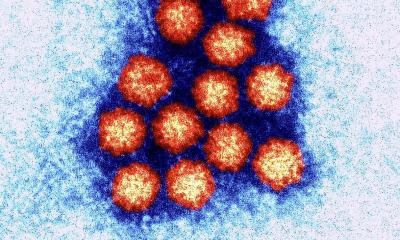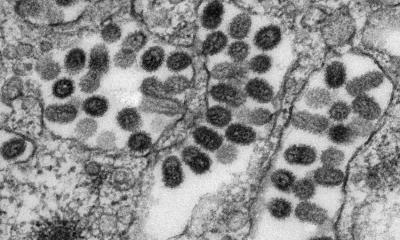News • Infectious disease
One in two people living with HIV in Europe is diagnosed late
The WHO European Region is the only region worldwide where the number of new HIV infections is rising.
With more than 160 000 people newly diagnosed with HIV across the Region, including more than 29 000 new cases from the European Union and European Economic Area (EU/EEA), this trend continued in 2016. One reason for this worrying trend: over half (51%) of the reported HIV diagnoses happen in a late stage of infection. “The HIV epidemic continues to rise at an alarming pace in the European Region, mostly in its eastern part, which is home to almost 80% of the 160 000 new HIV diagnoses. This is the highest number of new cases ever recorded in one year. If this trend persists, we will not be able to achieve the Sustainable Development Goal target of ending the HIV epidemic by 2030,” warns Dr Zsuzsanna Jakab, WHO Regional Director for Europe. “Testing people late, particularly those at higher risk of infection, results in late treatment and further contributes to the ongoing spread of HIV. The later people are diagnosed, the more likely they are to develop AIDS, thus leading to more suffering and death. On World AIDS Day, I urge all countries to take action now to reverse the HIV epidemic in Europe.”
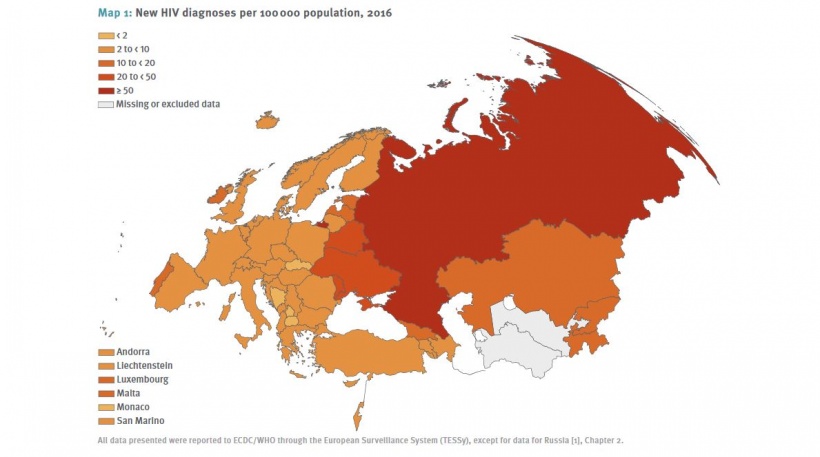
On average, it takes a person about 3 years from the time of infection until they are diagnosed, which is far too long
Andrea Ammon
Asked about EU action to address early testing, European Commissioner for Health and Food Safety Dr Vytenis Andriukaitis said: “To meet our goal of ending HIV, we need to ensure early diagnosis for everybody, reaching out to risk groups and to the most vulnerable. To succeed, we must work together across borders, across silos, across organizations to promote easy access to diagnosis and to fight barriers such as stigma and discrimination. EU initiatives such as Joint Action on HIV and Co-infection Prevention and Harm Reduction (HA-REACT) are vital in addressing gaps in the prevention of HIV and co-infections such as tuberculosis and viral hepatitis among hard-to-reach groups. Next year I intend to present an overview of policies and best practices in fighting HIV – including prevention and early testing – and encourage all Member States and stakeholders to put them in practice.”
ECDC Director Dr Andrea Ammon highlights: “Our data show that Europe needs to do more in its HIV response, with more than 29 000 newly reported HIV infections in the EU/EEA each year. On average, it takes a person about 3 years from the time of infection until they are diagnosed, which is far too long. This results in poorer long-term health outcomes for the many people who are diagnosed late and also increases the risk for onward HIV transmission. Two-thirds, that's 68%,of the new AIDS diagnoses in the EU/EEA happened only within three months after the HIV diagnosis, which indicates that these people have had the infection for many years previously.”
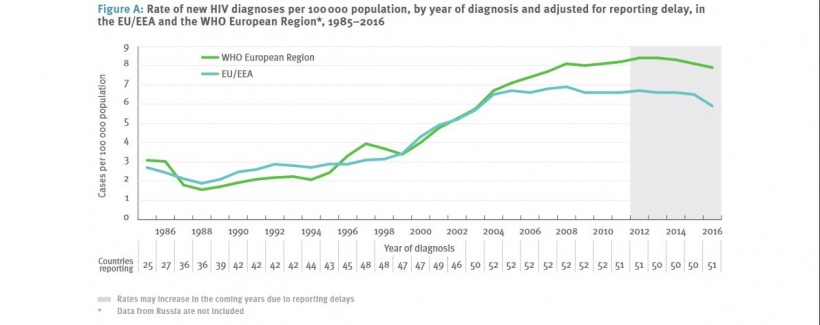
People over 50: two thirds diagnosed late
The HIV/AIDS surveillance data for 2016, published today by ECDC and the WHO Regional Office for Europe, show that the proportion of those who are diagnosed late is increasing with age. Across the whole Region, 65% (EU/EEA: 63%) of people aged 50 and older were diagnosed late in the course of their HIV infection. Especially in this older age group, health-care services in the community play a vital role in providing opportunities for earlier HIV diagnosis. HIV testing based on specific health conditions, such as other sexually transmitted infections, viral hepatitis, tuberculosis or certain cancers, could also lead to improved diagnosis.
Early diagnosis: higher life expectancy and less transmission
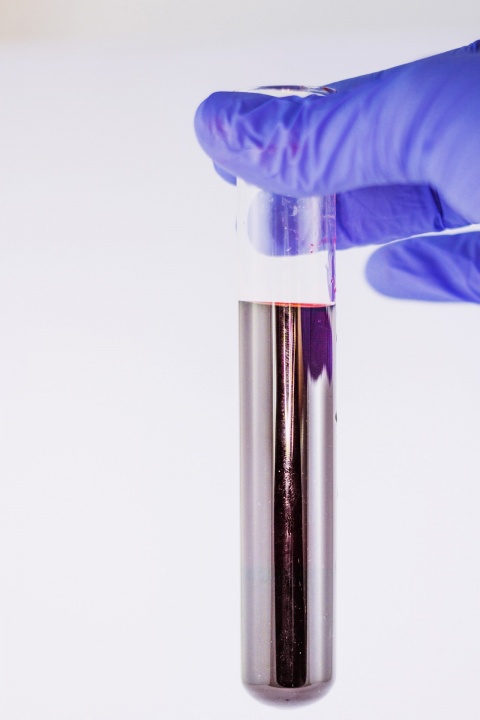
WHO Regional Office and ECDC directors stress that to reduce the number of future HIV infections, Europe needs to focus on 3 main areas:
- prioritizing effective and comprehensive prevention measures such as awareness-raising; promotion of safe sex, condoms and substitution therapy; and provision of needle exchange programmes and pre-exposure prophylaxis for HIV;
- providing efficient HIV counselling and testing services, including rapid diagnostic services, community-based HIV testing and HIV self-testing; and
- ensuring rapid access to quality treatment and care for those diagnosed.
Early diagnosis is important because it allows people to start HIV treatment sooner, which in turn increases their chances of living a long and healthy life. In addition, early treatment reduces the risk of:
- transmitting HIV further, as it results in an undetectable viral load (that is, the virus can no longer be transmitted to others);
- developing AIDS (AIDS cases have nearly doubled in the eastern part of the Region during the last decade); and
- contracting or developing tuberculosis, the most common AIDS-defining illness in the Region, particularly in its eastern part.
Guidance to improve testing in Europe
The WHO-consolidated guidelines on HIV testing services are aimed at HIV programme managers, health workers and other stakeholders to support them to increase access to HIV counselling and testing. In particular, they advocate for the introduction of self-testing and/or the offer of counselling and testing by trained community care providers to increase uptake. Supplemented by guidance on HIV self-testing and partner notification, these guidelines support countries progressing towards the global, regional and national target that 90% of people with HIV are diagnosed by 2020.
The annual HIV report 2017 for Europe can be found here.
Source: WHO
28.11.2017



